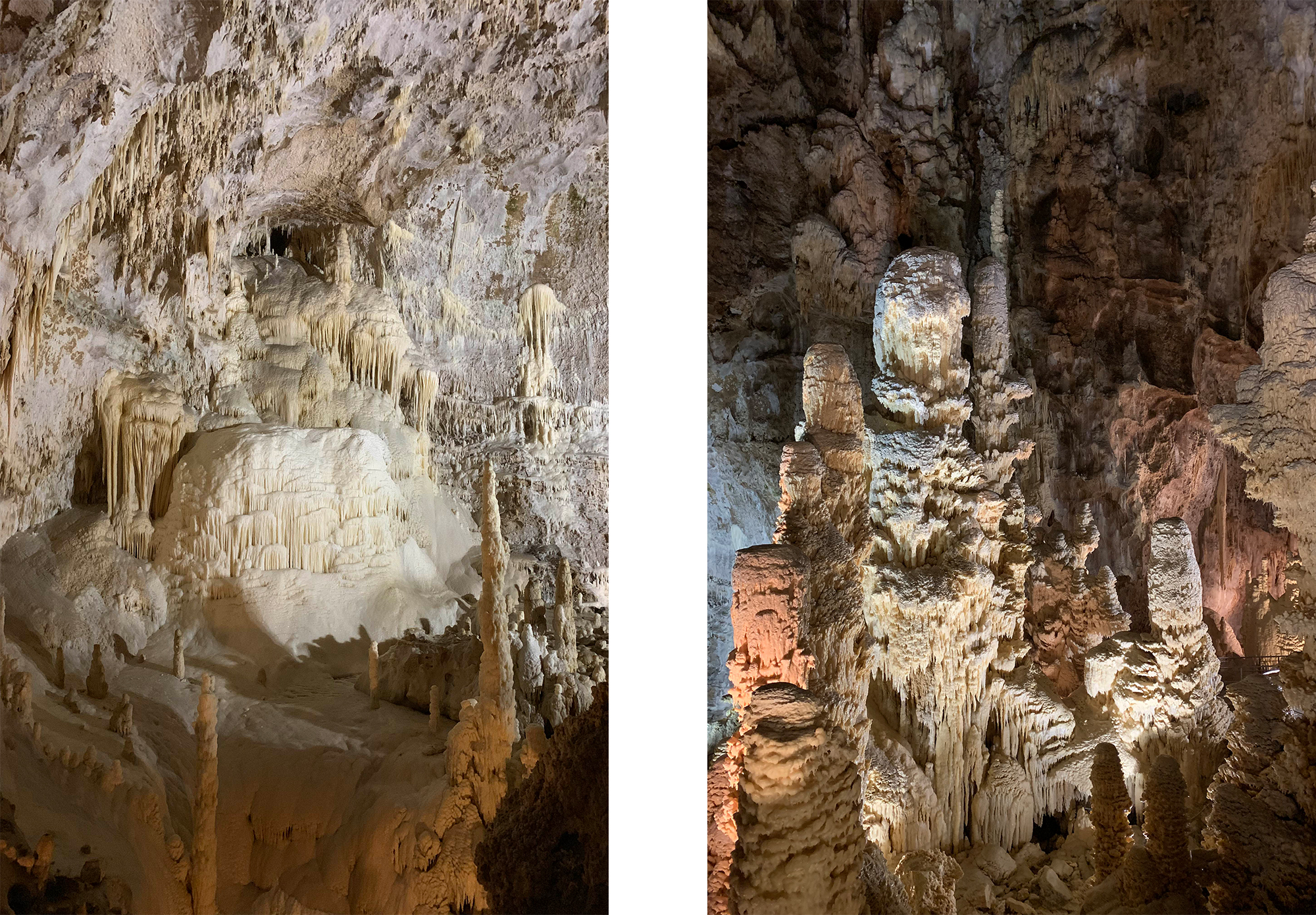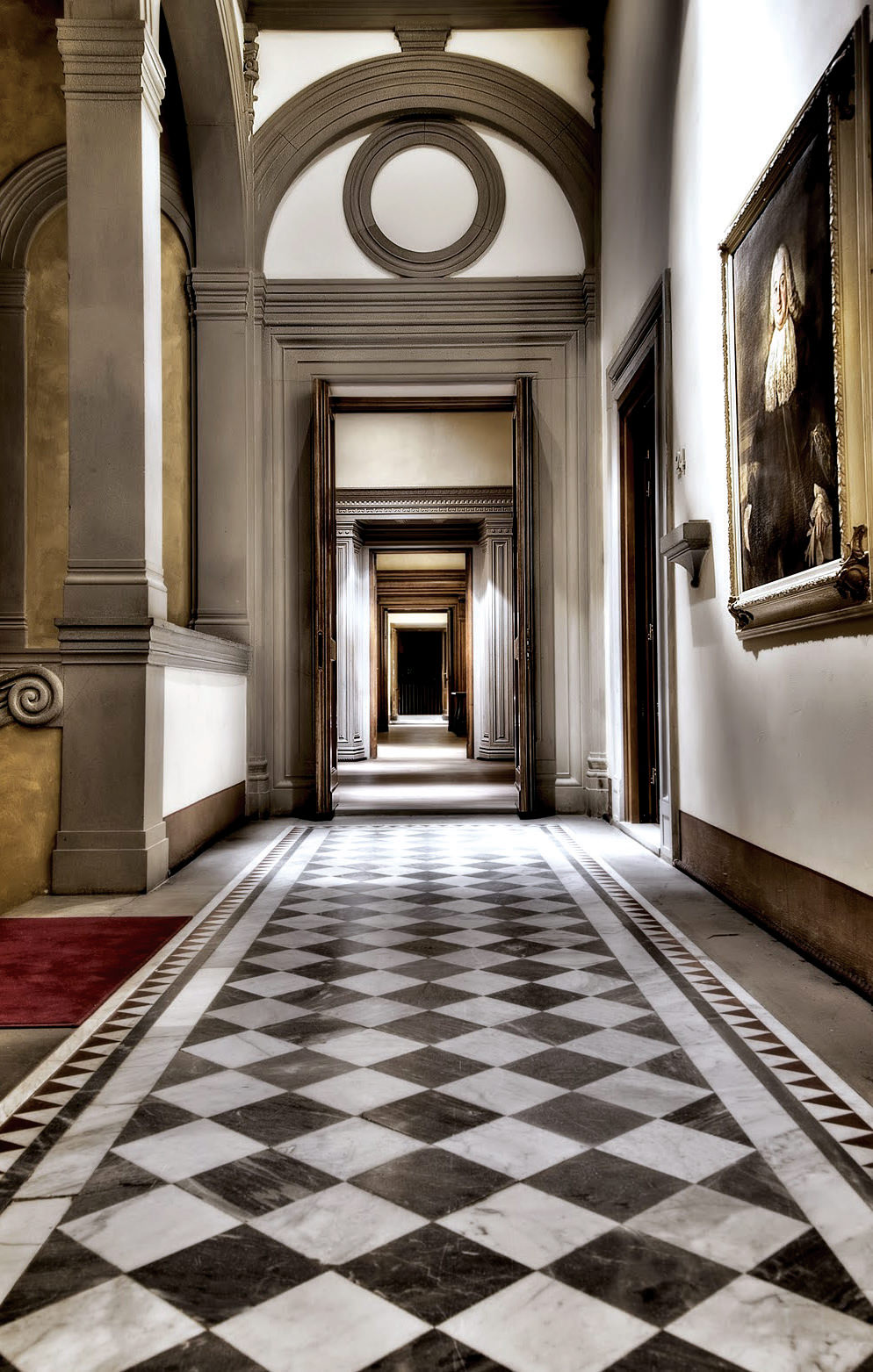The Underground World of the Frasassi Caves
Italy’s most spectacular karst abyss.

Deep in the hills near the remote village of Genga, in Italy’s Marche region, is the Grotte di Frasassi, a wonderland of calcareous stratifications dating as far back as 150 million years ago. This subterranean world first opened to the public in 1974, three years after mountaineer Maurizio Bolognini discovered it by accident. Inside the cave cavities, which extend nearly 30 kilometres, are stalagmites (columns that grow from bottom to top) and stalactites (ones that descend from the ceiling of the cavities), crystallized pods, tunnels, rocks, and minerals.
In 1971, Bolognini was 21 years old, and the spirit of adventure had him out climbing often. On one occasion, while at the top of Monte Frasassi, he noticed an unusual hole on the slope opposite to what is now the entrance to the cave. It was unusual in the sense that when Bolognini sat down to rest for a moment near the hole, he experienced a cold sensation on his back. He inched into the hole and was faced with pitch darkness. On a few more visits, he and fellow mountaineers were able to dig a tunnel large enough to pass through, and then using a homemade rope ladder, they descended into the karst abyss, and the rest is history.

Inside the cave cavities are stalagmites (columns that grow from bottom to top) and stalactites (descend from the ceiling of the cavities).
Grotte di Frasassi is a complex cave system. First, you enter Abyss Ancona, said to be one of the largest caves in all of Europe. It’s like walking through an upside-down fantasy world: The cavernous chamber is full of stalagmites that rise up like melted candles and stalactites hanging from the ceiling that resemble a pipe organ. So vast is this cave that it could easily house the Duomo of Milan. This is the place where Bolognini first descended by rope ladder, laying eyes on the Giants, as they are called—two ancient stalagmites that are 65 feet tall.
The shapes and sizes of the natural wonders of the Grotte di Frasassi have captured the imagination of the many speleologists who have visited the caves. As you progress through them, your guide will point out Niagara Falls, an enormous mass of calcite; the Camel, the Madonnina, the Sword of Damocles—the largest stalactite, at 25 feet—and plenty of other rock formations that will remind you of organ pipes, Santa Claus, and even a polar bear. The most beautiful? Definitely the Hall of Candles—pure magic. The guided tour is a one-and-a-half-hour walk along spacious pathways, with theatrical lighting to enhance the experience. For those looking for adventure, there’s a visit to an additional two caves that will have you suited up in headgear, headlamp, and more, trekking in darkness as Bolognini would have done.
_________
Never miss a story. Sign up for NUVO’s weekly newsletter, here.




